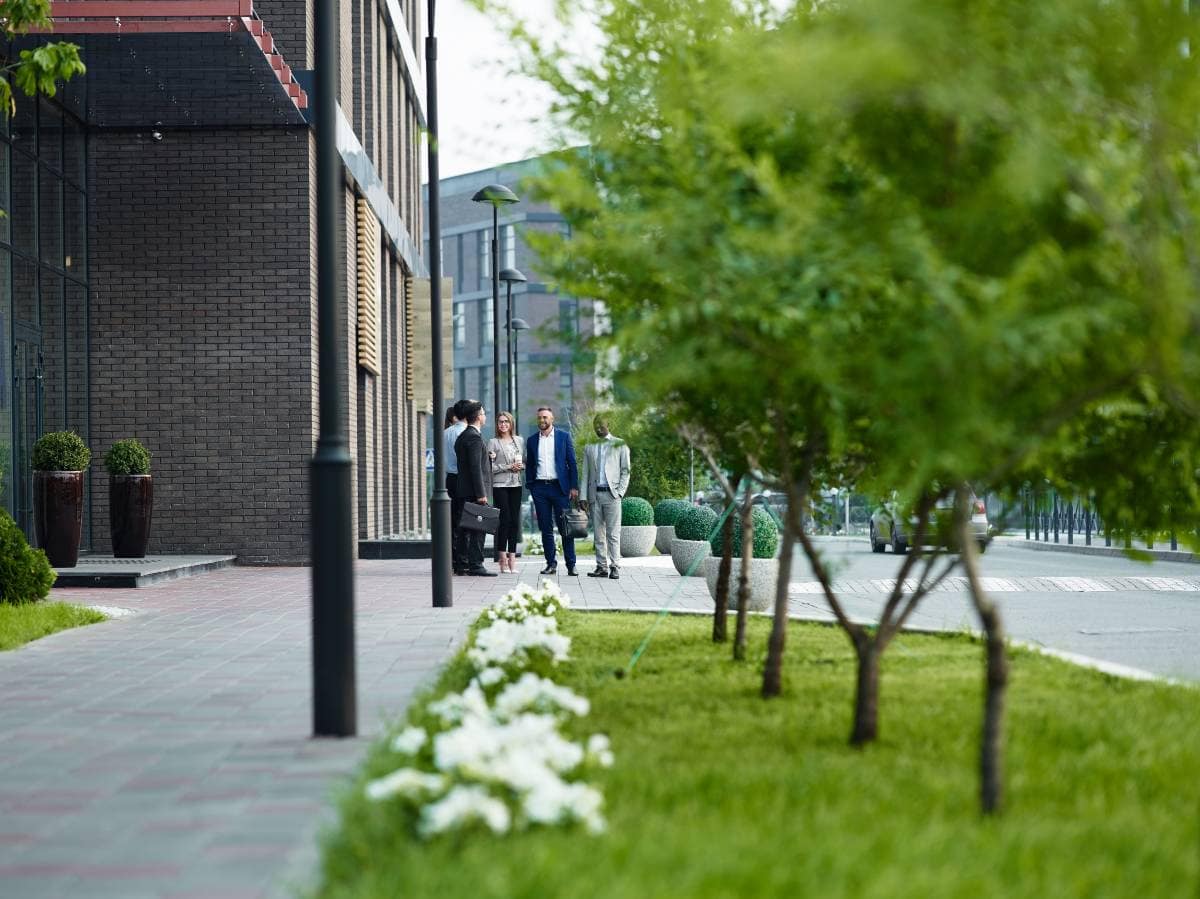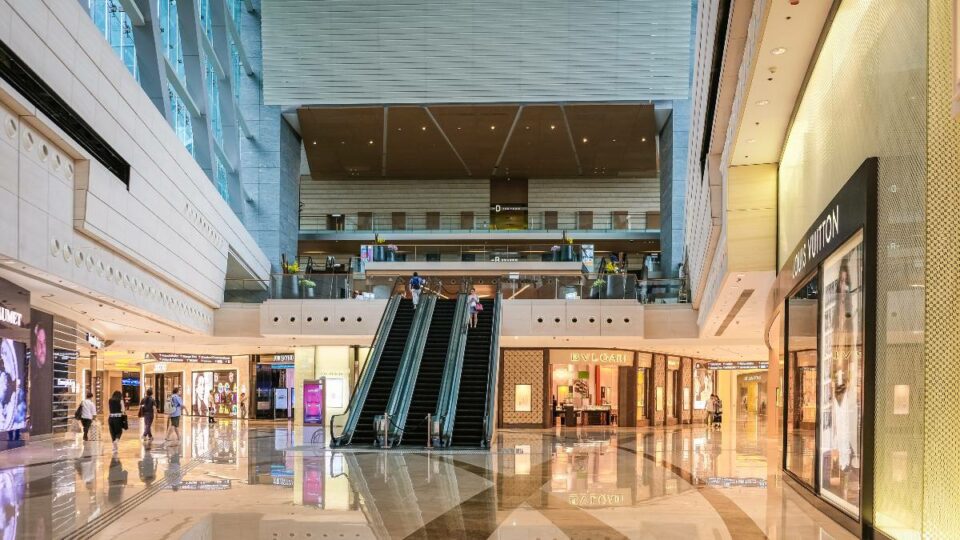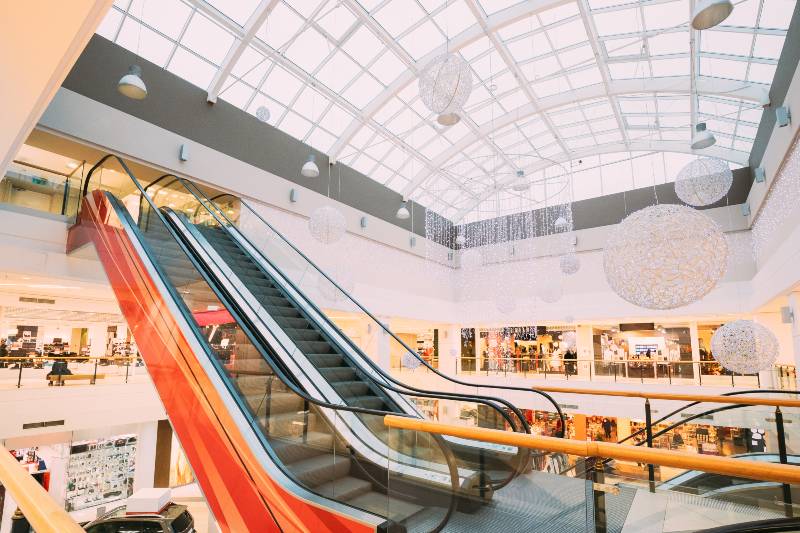As someone who’s spent nearly two decades in commercial real estate, I’ve seen firsthand how property aesthetics can make or break a deal. Hi! I’m Tom. Let me share something interesting: proper commercial landscape maintenance doesn’t have to drain your budget. In fact, with the right approach, it can be one of your most valuable investments.
Key Takeaways
- Commercial landscaping investments typically range from $2,600 to $13,700, with maintenance costs between $100-$300 monthly
- Smart irrigation systems and native plants can reduce long-term maintenance costs by up to 30%
- Property value can increase by 15-20% with well-planned, cost-effective landscaping
Understanding the Cost Structure
When clients ask me about budgeting, I tell them that commercial landscaping averages about $10.75 per square foot – a figure I’ve consistently seen across various projects.
Base Costs and Initial Investment
The foundation of any commercial landscaping project usually falls between $2,600 and $13,700, with most clients landing around $8,150 for their initial investment. This baseline covers basic design, primary plantings, and fundamental irrigation systems. In my experience, breaking these costs into phases often makes the investment more manageable for property owners.
Ongoing Maintenance Considerations
Monthly maintenance is where I see many property owners miscalculate. While basic maintenance of lawns or gardens typically runs between $100 and $200 monthly, larger properties might get closer to $300. These figures vary significantly based on property size, location, and specific maintenance requirements. I always advise my clients to factor in seasonal variations in their maintenance budgets.
Hidden Cost Factors
I’ve noticed that local regulations and permits are often overlooked in initial budgeting. Every jurisdiction has different requirements, which can significantly impact your bottom line. Property accessibility is another crucial factor that affects costs – features like multiple building entrances, parking lots, and complex layouts require more detailed maintenance planning.
Labor and Materials
In my experience, the cost breakdown varies significantly based on your specific project needs. I’ve found that material costs can fluctuate based on seasonal availability and market conditions. One cost-saving strategy I often recommend is timing their material purchases during off-peak seasons and considering bulk ordering for phased projects.
Smart Budget Planning
When I advise on budget optimization, I recommend allocating 25-35% of their property maintenance budget to landscaping. Here’s how I suggest breaking this down:
- Essential maintenance: 50%
- Seasonal enhancements: 30%
- Emergency fund: 20%
Professional services might seem expensive initially, but they often prove more practical in the long run. I’ve seen properties save up to 20% annually by investing in quality maintenance upfront.
Cost-Saving Strategies That Actually Work
Through my years in commercial real estate, I’ve discovered that the most effective cost-saving strategies combine both immediate and long-term thinking. The key isn’t just about cutting costs – it’s about making smart investments that reduce expenses over time while maintaining or even enhancing your property’s appeal.
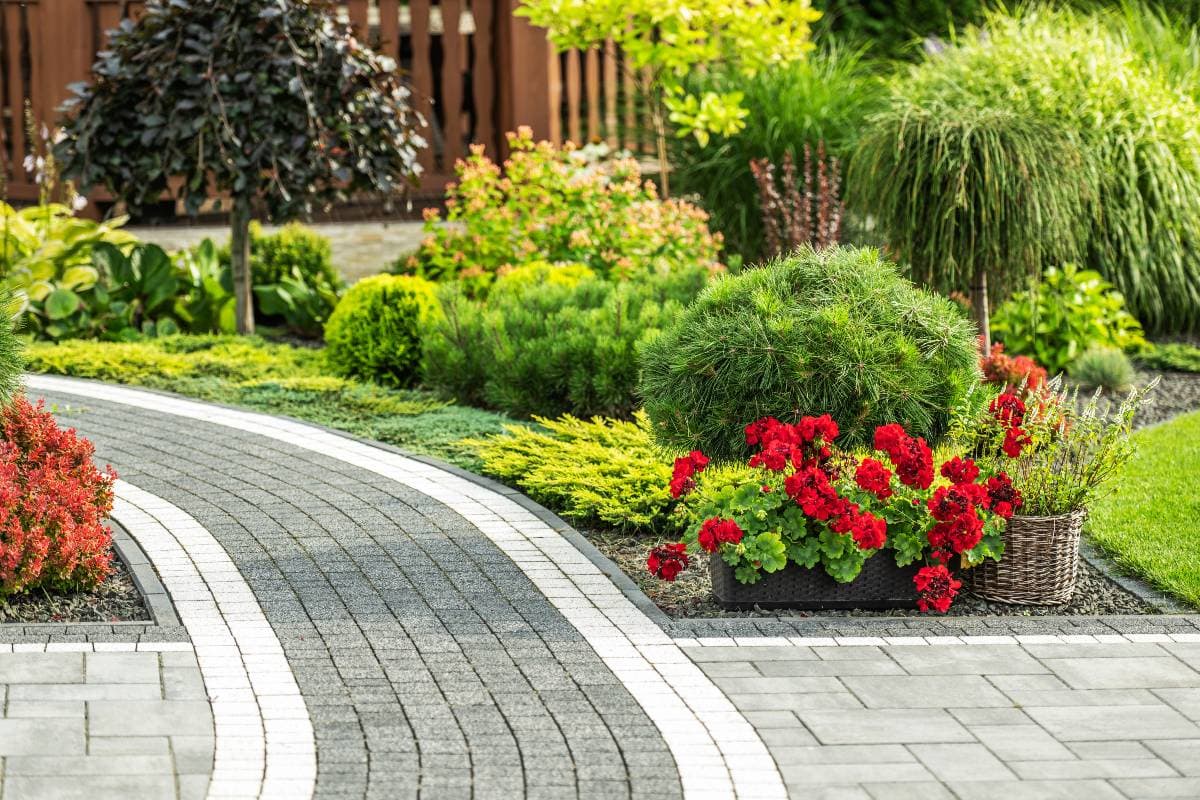
Design Optimization for Long-Term Savings
One of the most impactful strategies I recommend is focusing on native plant selection. Native plants naturally thrive in your local climate, requiring less water, fewer fertilizers, and minimal maintenance. I’ve seen properties transform their water consumption simply by transitioning to native landscaping. When combined with proper xeriscaping principles, these design choices create sustainable, low-maintenance spaces that look professional year-round.
Smart Implementation Through Phasing
Implementation timing can make or break your budget. I always recommend considering a phased approach to their landscaping projects. This strategy allows you to spread costs over time while maintaining full control over quality and results. It also provides the flexibility to adjust designs based on real-world performance and feedback. Think of it as a strategic rollout rather than an all-at-once transformation.
Water Management Solutions
Water costs can quickly escalate in commercial landscaping. I’ve found that implementing efficient irrigation zones and proper soil preparation dramatically reduces water usage. By grouping plants with similar water needs together and investing in quality soil preparation upfront, you create conditions that naturally reduce water requirements. This approach not only saves money but also promotes healthier plant growth.
Maintenance Planning
The most overlooked aspect of commercial landscapes is strategic regular maintenance planning. I always emphasize the importance of preventive care – addressing small issues before they become expensive problems. This includes regular soil testing, seasonal pruning schedules, and systematic equipment maintenance. When properly executed, preventive maintenance significantly reduces emergency repairs and plant replacement costs.
Technology Integration
I’ve witnessed a remarkable evolution in landscaping technology. Today’s smart solutions aren’t just fancy additions – they’re essential tools for bringing down the cost of commercial landscaping services.
Smart Irrigation Systems: The Game Changer
Modern irrigation technology has revolutionized how we manage our lawns or commercial landscapes. Smart controllers can now adjust watering schedules based on real-time weather data and soil conditions. I’ve helped numerous property owners implement these systems, and while the initial investment might seem substantial, the long-term benefits are undeniable.
These systems help prevent both overwatering and underwatering, leading to healthier landscapes and more efficient water usage.
Digital Landscape Management
The days of paper-based maintenance logs are behind us. Today’s landscape management software allows property owners to track maintenance schedules, monitor costs, and manage resources with unprecedented precision. I regularly recommend these digital tools to my clients because they provide valuable insights into maintenance patterns and help identify areas where efficiency can be improved.
Remote Monitoring Capabilities
One of the most exciting developments I’ve seen is the ability to monitor landscape health and irrigation systems remotely. Through mobile applications and sensor networks, property managers can now detect issues before they become visible problems.
This proactive approach helps prevent costly repairs and maintains consistent landscape appearance – something particularly important for commercial properties where first impressions matter.
Integration with Building Management Systems
For larger commercial properties, I often suggest integrating technology of landscaping companies that have existing building management systems. This holistic approach allows for better coordination of resources and more efficient overall property management.
Whether it’s coordinating irrigation with cleaning schedules or managing outdoor lighting systems, integrated technology solutions help create more efficient property management strategies.
Industry-Specific Considerations
Different properties have different needs. Here’s what I typically recommend:
| Property Type | Focus Areas | Cost-Saving Approach |
|---|---|---|
| Retail | Curb appeal | High-impact, low-maintenance designs |
| Office | Professional aesthetics | Native plants, efficient irrigation |
| Healthcare | Therapeutic environments | Sustainable, clean designs |
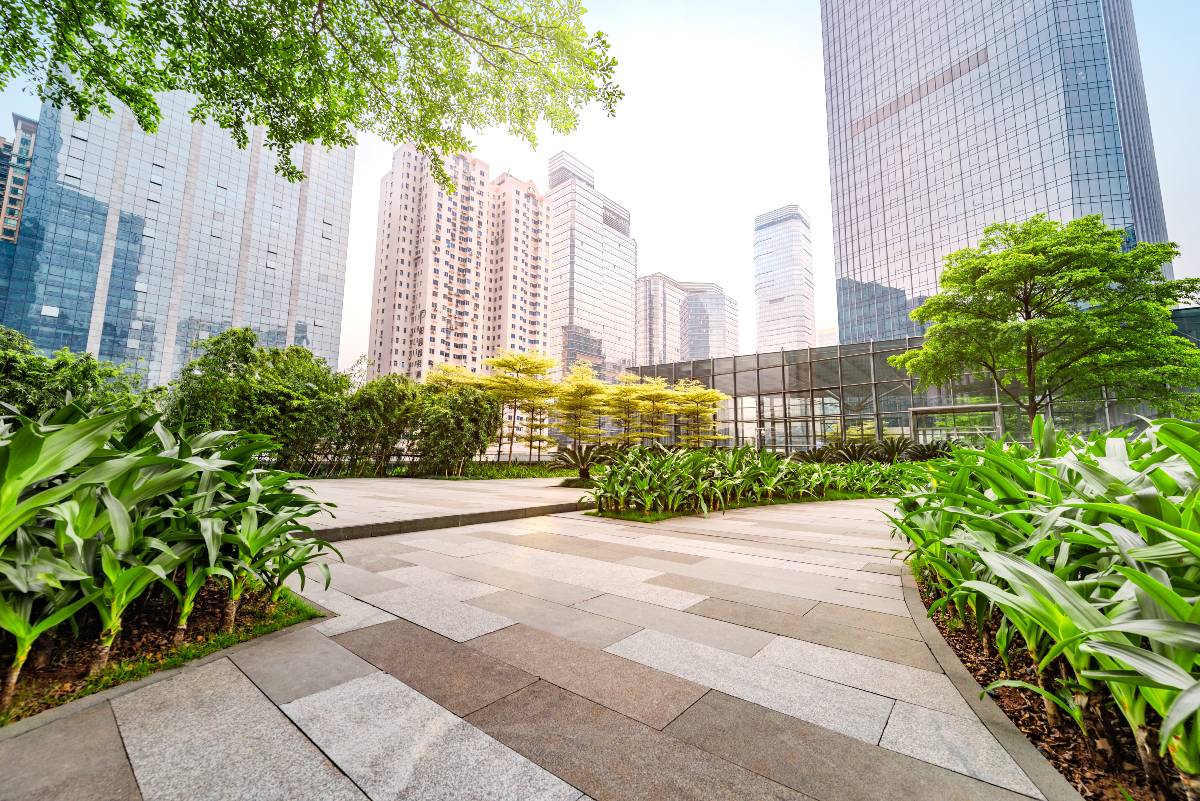
Sustainability and ROI
I’ve noticed a significant shift in how sustainability affects property value and operating costs. The relationship between sustainable landscaping practices and return on investment has become increasingly clear, and it’s reshaping how we approach commercial landscaping.
The Business Case for Sustainable Landscaping
Sustainable landscaping isn’t just about environmental responsibility – it’s about smart business. I’ve observed that these landscapes require less intensive maintenance and fewer resource inputs over time. The initial investment in sustainable practices often pays for itself through reduced operating costs and increased property appeal.
Water Conservation as a Cost-Saving Strategy
Water management has become a critical focus in commercial landscaping. By implementing water-efficient designs and native plantings, many of my clients have significantly reduced their water consumption. This isn’t just environmentally responsible – it’s a direct response to rising water costs and increasing regulations around water usage in properties.
Energy Efficiency in Landscape Design
Strategic landscape design can contribute to a property’s overall energy efficiency. Through careful placement of trees and vegetation, properties can reduce heating and cooling costs. I often work with my clients to develop landscape plans that provide natural shade during summer months and wind protection during winter, contributing to lower energy bills year-round.
Environmental Certifications and Market Value
While environmental certifications like the Leadership in Energy and Environmental Design (LEED) require an initial investment, they can enhance a property’s market position. In today’s market, tenants and buyers increasingly value sustainable properties. I’ve seen firsthand how properties with strong environmental credentials can attract quality tenants and command competitive rates in the market.
FAQs
What’s the typical ROI for commercial landscaping?
How can I reduce commercial landscaping costs?
What’s the most cost-effective way to start landscaping?
How much money should I allot to my commercial landscaping budget?
What plants are good for commercial properties?
Conclusion
Commercial landscaping is about making smart choices that balance immediate costs with long-term benefits. Through my years in commercial real estate, I’ve seen how strategic landscaping can transform properties from ordinary to extraordinary – without breaking the bank.
Let’s discuss how we can optimize your landscaping investment. Schedule a consultation today!
Remember, every dollar spent on smart landscaping is an investment in your property’s future. Let’s make it count together.
